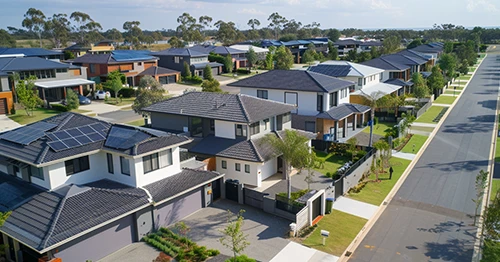Updated: 27 Dec, 2024
CoreLogic’s Home Value Index showed a modest 0.6% rise in November, marking the smallest monthly gain since the growth cycle commenced in February 2023. Despite this slowdown, the national HVI achieved a record high. After a 7.5% decline from the peak in April 2022 to the trough in January 2023, housing values rebounded, showing an 8.3% increase over the last 10 months.
Notably, housing values in Melbourne and Hobart dipped by 0.1%, with Darwin experiencing a 0.3% decline. Sydney had its smallest gain of the recovery cycle, at 0.3%. In contrast, Perth, Brisbane and Adelaide experienced an acceleration in housing values. Perth led with the largest monthly gain at 1.9%, followed by Brisbane at 1.3% and Adelaide at 1.2%.
CoreLogic’s research director, Tim Lawless, said, “The imbalance between available supply and demonstrated demand is keeping strong upward pressure on housing values across these markets, despite the downside factors leading to weaker housing market conditions across the lower eastern seaboard.” He further explained that factors such as the Melbourne Cup Day rate hike and rising advertised stock levels, along with worsening affordability and low consumer sentiment, are collectively dampening value growth in some markets.
Higher-priced properties in Sydney and Melbourne experienced a slowdown in their rate of value increase. Lawless suggested, “The more expensive end of the market tends to lead the cycles in these cities. As borrowing capacity reduces, we may be seeing more demand deflected towards lower housing price points, with the broad middle of the market now recording the strongest rate of growth in Sydney and Melbourne.”
In November, regional and capital city growth converged, with the combined capitals and regional index recording a 0.6% rise in values. Despite regional markets lagging behind their capital city counterparts during the recovery phase, the combined capital index increased by more than double the combined regional index, up 9.6% and 4.3%, respectively, by the end of November.
Housing values in regional Australia remained 1.8% below the historic high recorded in May 2022. Regional NSW and Regional Victoria recorded the largest shortfalls, from record levels at 5.5% and 6.7%, respectively.
Property Market Highlights
Here’s what happened in Australia’s property market in November 2023:
- A rise in vendor activity played a pivotal role in the housing slowdown. While total stock levels have been rising since July 2023, demand has not kept up with the surge in vendor activity.
- In the four weeks ending 26 November, advertised stock levels were above the previous five-year average in Hobart, Canberra, Melbourne and Sydney. Lawless noted, “In these cities, market conditions are now in favour of buyers, as higher stock levels provide more choice, less urgency and greater opportunities to negotiate.”
- However, in Perth, Brisbane, and Adelaide, advertised stock levels were low, with Perth’s listings 40% below their five-year average and Brisbane and Adelaide’s listings 30% below their average.
- Despite high debt costs and deeply pessimistic consumer sentiment, purchasing activity remained resilient. Quarterly sales across the combined capitals were roughly in line with the previous five-year average, but regional demand trended higher, from below-average levels.
- Rental vacancy rates were tight, at 1.2% and 1% for combined regionals and combined capitals, respectively.
- Adelaide, Perth and Melbourne recorded the lowest rental vacancy rates, at 0.3%, 0.6%, and 0.8%, respectively.
- November marked the first time in six months that rents rose faster than home values. However, with the cost of debt and higher maintenance costs, net yields could remain low for investors.
Housing Market Outlook
The expectation of sustained higher interest rates is exacerbating affordability challenges and deepening consumer pessimism. The latest Housing Affordability Report from ANZ and CoreLogic revealed that saving a 20% deposit would take 10 years, and the portion of income required to service a new mortgage is at a record high of 46.2%.
What Housing Trends Should You Look for In The New Year?
Anticipate a heightened focus on increasing the supply of housing. While Australia may be at peak net overseas migration, vacancy rates and rental growth are expected to be lower. Build-to-rent developments are projected to contribute to rental supply, but a substantial increase is not expected until 2025.
Western Australia and Queensland could outperform the rest of the country due to solid interstate migration rates, low supply and fewer affordability challenges than Sydney and Melbourne. Units may outperform houses due to lower price points.
Climate change is a prominent concern on the housing policy agenda, with potential policy changes aimed at improving the energy efficiency of Australian homes.





